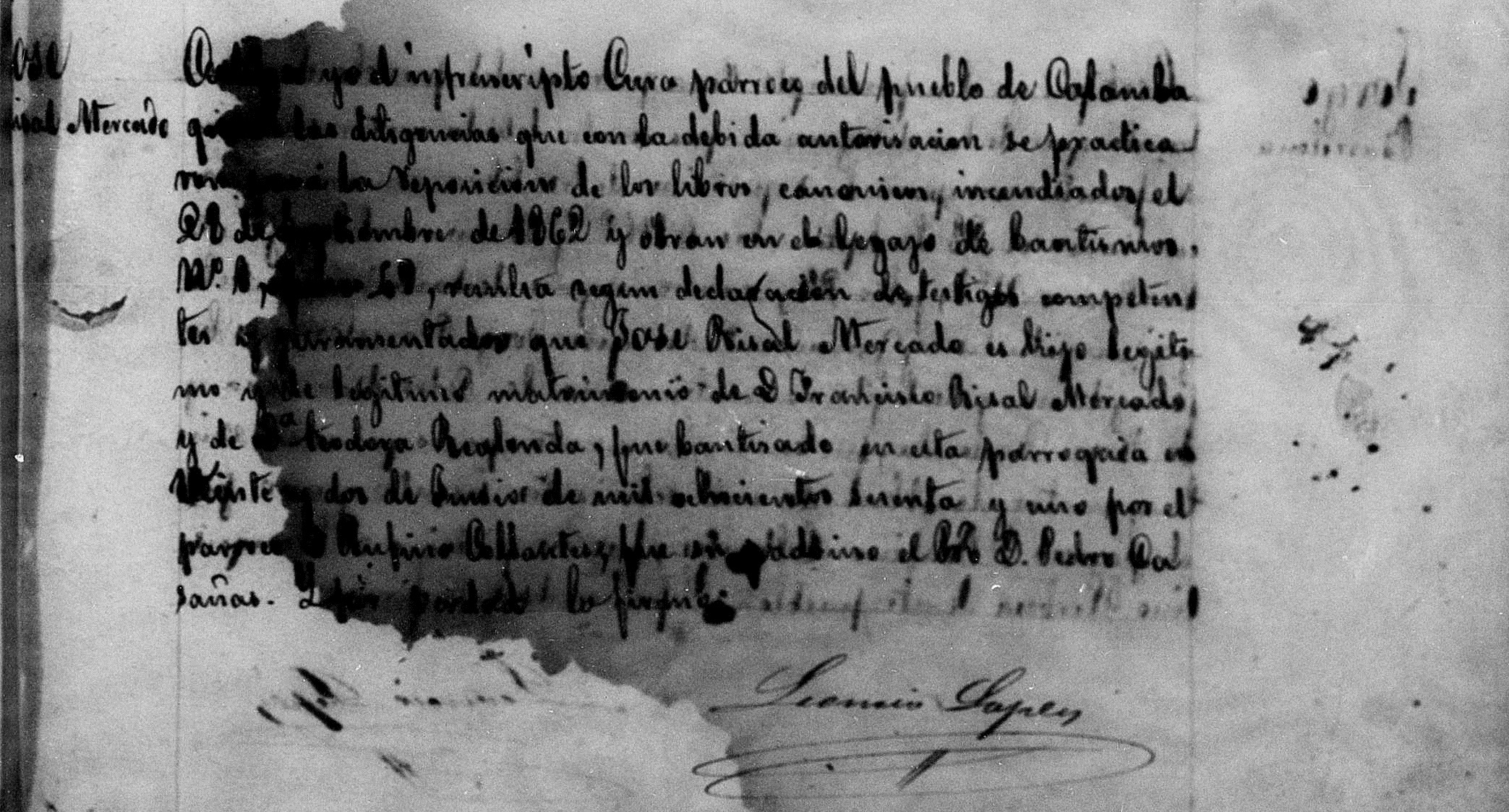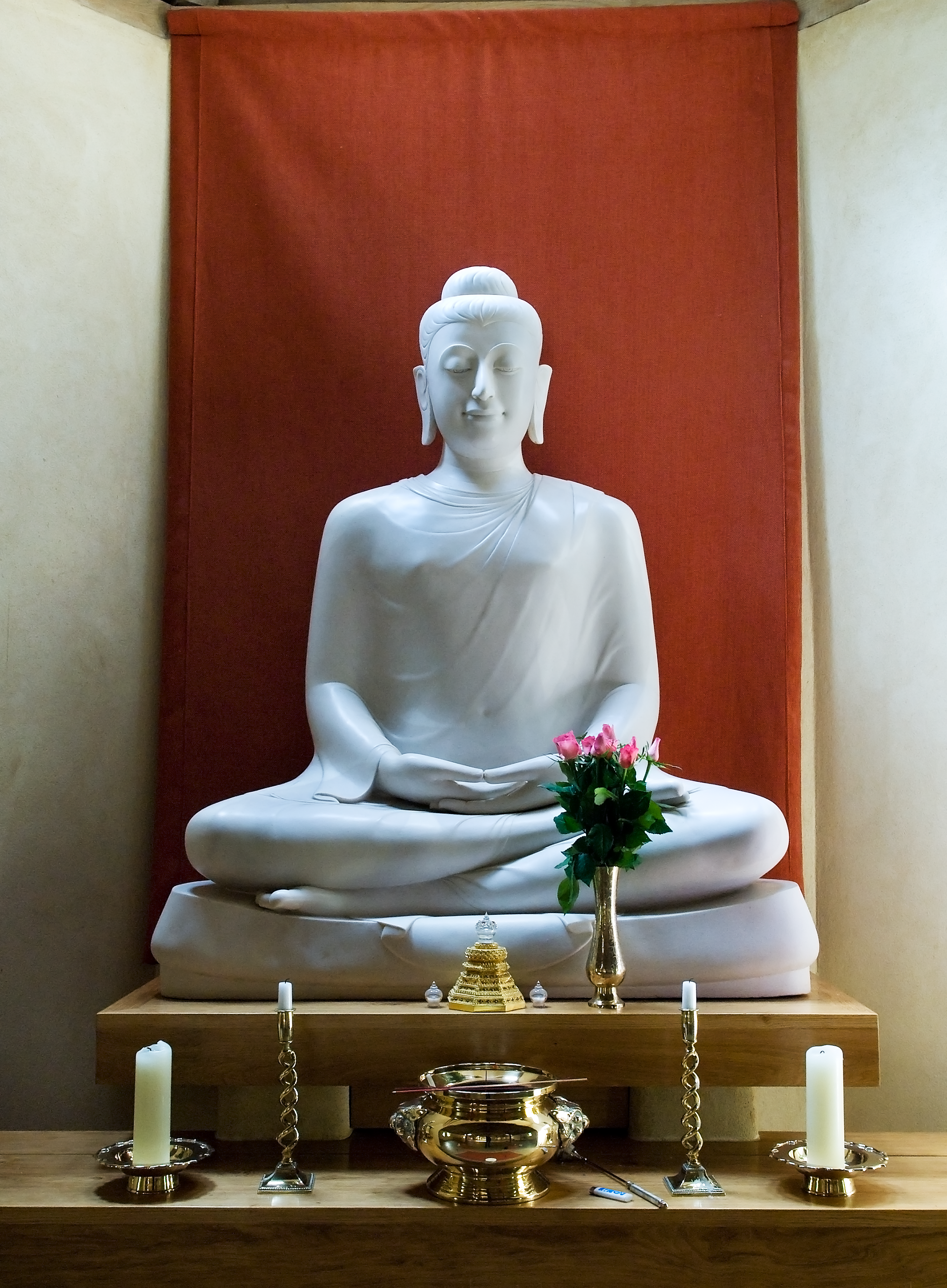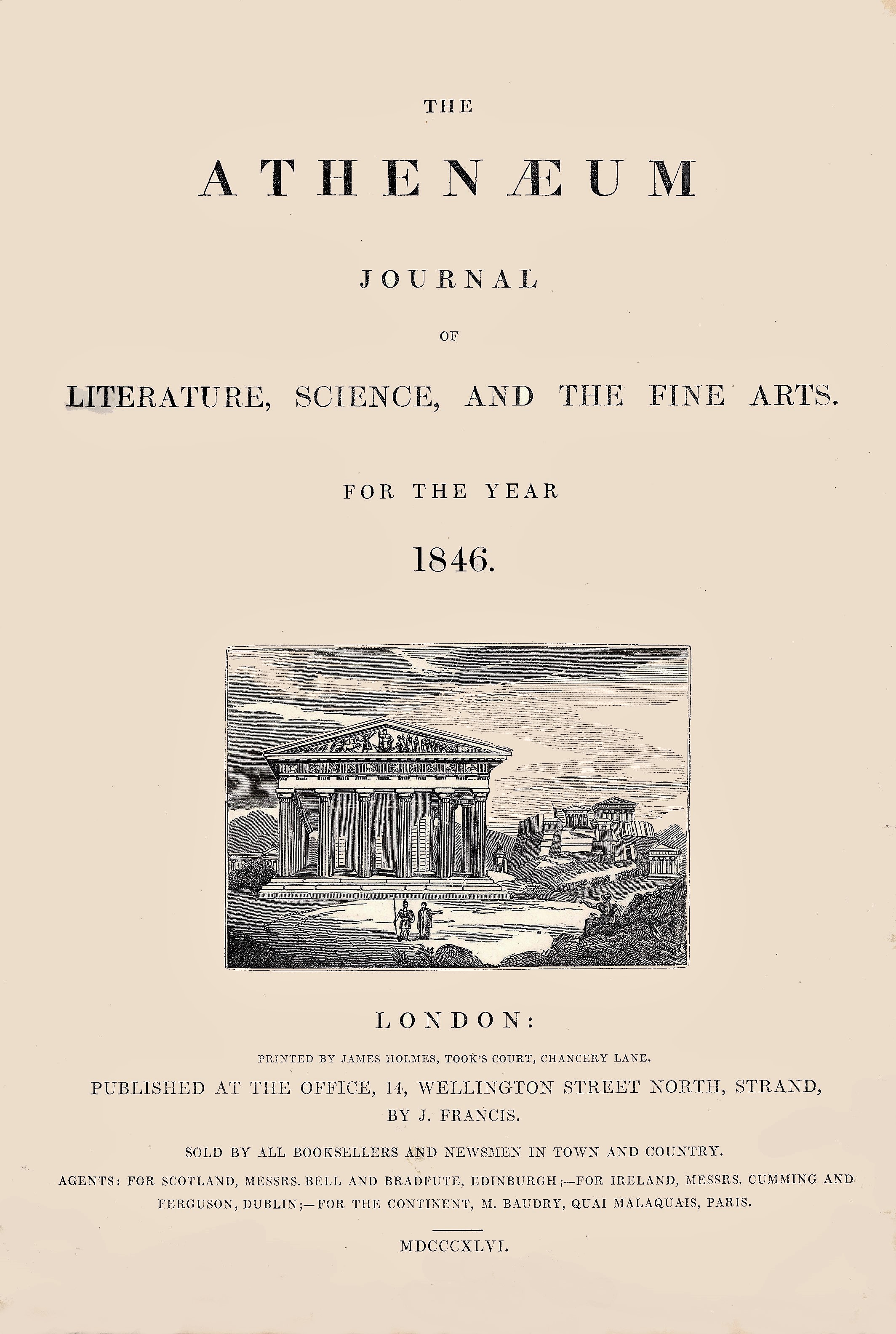|
Reinhold Rost
Reinhold Rost (1822–1896) was a German orientalist, who worked for most of his life at St Augustine's Missionary College, Canterbury in England and as head librarian at the India Office Library, London. Life He was the son of Christian Friedrich Rost, a Lutheran minister, and his wife Eleonore Glasewald, born at Eisenberg in Saxen-Altenburg on 2 February 1822. He was educated at the Eisenberg gymnasium school, and, after studying under Johann Gustav Stickel and Johann Gildemeister, graduated Ph.D. at the University of Jena in 1847. In the same year he came to England, to act as a teacher in German at the King's School, Canterbury. After four years, on 7 February 1851, he was appointed oriental lecturer at St. Augustine's Missionary College, Canterbury, founded to educate young men for mission work. This post he held for the rest of his life. In London, Rost met Sir Henry Creswicke Rawlinson, and was elected, in December 1863, secretary to the Royal Asiatic Society, a post ... [...More Info...] [...Related Items...] OR: [Wikipedia] [Google] [Baidu] |
Reinhold Rost, Porträt Mit Signatur, Um 1890
Reinhold is a German male given name. This German name is originally from "Reinold", composed of two elements. The first is from ''ragin'', meaning "the (Germanic) Gods" and ''wald'' meaning "powerful". This name was popularised by the ancient German hero figure known as Reinhold von Montalban (The Four Sons of Aymon), Reinhold von Meilan ( The Dietrich Saga), and ultimately, as Saint Reinhold von Köln. The -h- is recorded in the Dietrich von Bern legendary figure De gude Reinholt van Meilan who was the only one spared the slaughter at Erminrich's castle due to his loyalty to Dietrich. Hence with the addition of the -h- the etymology is interpreted as the emphatic prefix ''regn-'' with ''hold'', apparently meaning "solemnly loyal".George T. Gillespie, A Catalogue Of Persons Named In German Heroic Literature (700-1600) Including Named Animals And Objects And Ethnic Names, 1973, pp 107-108 This name was brought to the British Isles by Viking conquerors, in the form of the Old N ... [...More Info...] [...Related Items...] OR: [Wikipedia] [Google] [Baidu] |
José Rizal
José Protasio Rizal Mercado y Alonso Realonda (, ; June 19, 1861 – December 30, 1896) was a Filipino nationalist, writer and polymath active at the end of the Spanish colonial period of the Philippines. He is considered the national hero (''pambansang bayani'') of the Philippines. An ophthalmologist by profession, Rizal became a writer and a key member of the Filipino Propaganda Movement, which advocated political reforms for the colony under Spain. He was executed by the Spanish colonial government for the crime of rebellion after the Philippine Revolution broke out; it was inspired by his writings. Though he was not actively involved in its planning or conduct, he ultimately approved of its goals which eventually resulted in Philippine independence. Rizal is widely considered one of the greatest heroes of the Philippines and has been recommended to be so honored by an officially empaneled National Heroes Committee. However, no law, executive order or proclamation ... [...More Info...] [...Related Items...] OR: [Wikipedia] [Google] [Baidu] |
Buddhism In England
Buddhism in England has growing support. 238,626 people in England declared themselves to be Buddhist at the 2011 Census and 34% of them lived in London. History Early Buddhist presence could be seen in the 1810s. Adam Sri Munni Ratna, a Buddhist monk from Ceylon (Sri Lanka), travelled to England with his cousin (also a Buddhist monk) while accompanying Sir Alexander Johnston in 1818. They were keen to learn Christianity as they were travelling to England. During their brief stay, the two monks were baptised and returned to Ceylon where they entered government service. Theravada influences grew in England during the early 20th century. A few of the significant events were the foundation of London’s Buddhist Society in 1924 and the Theravada London Buddhist Vihara in Chiswick in 1926. Anagarika Dharmapala (1864-1933), the founder of the Mahā Bodhi Society in 1891, was instrumental in presenting Buddhism as a living monastic tradition to the UK. The return of Ananda Metteyy ... [...More Info...] [...Related Items...] OR: [Wikipedia] [Google] [Baidu] |
Burma
Myanmar, ; UK pronunciations: US pronunciations incl. . Note: Wikipedia's IPA conventions require indicating /r/ even in British English although only some British English speakers pronounce r at the end of syllables. As John Wells explains, the English spellings of both Myanmar and Burma assume a non-rhotic variety of English, in which the letter r before a consonant or finally serves merely to indicate a long vowel: �mjænmɑː, ˈbɜːmə So the pronunciation of the last syllable of Myanmar as ɑːror of Burma as ɜːrməby some speakers in the UK and most speakers in North America is in fact a spelling pronunciation based on a misunderstanding of non-rhotic spelling conventions. The final ''r'' in ''Myanmar'' was not intended for pronunciation and is there to ensure that the final a is pronounced with the broad ''ah'' () in "father". If the Burmese name my, မြန်မာ, label=none were spelled "Myanma" in English, this would be pronounced at the end by all ... [...More Info...] [...Related Items...] OR: [Wikipedia] [Google] [Baidu] |
Rangoon
Yangon ( my, ရန်ကုန်; ; ), formerly spelled as Rangoon, is the capital of the Yangon Region and the largest city of Myanmar (also known as Burma). Yangon served as the capital of Myanmar until 2006, when the military government relocated the administrative functions to the purpose-built capital city of Naypyidaw in north central Myanmar. With over 7 million people, Yangon is Myanmar's most populous city and its most important commercial centre. Yangon boasts the largest number of colonial-era buildings in Southeast Asia, and has a unique colonial-era urban core that is remarkably intact. The colonial-era commercial core is centered around the Sule Pagoda, which is reputed to be over 2,000 years old. The city is also home to the gilded Shwedagon Pagoda – Myanmar's most sacred and famous Buddhist pagoda. Yangon suffers from deeply inadequate infrastructure, especially compared to other major cities in Southeast Asia, such as Jakarta, Bangkok or Hanoi. Though ... [...More Info...] [...Related Items...] OR: [Wikipedia] [Google] [Baidu] |
Yangon General Hospital
The Yangon General Hospital (YGH, my, ရန်ကုန် ပြည်သူ့ ဆေးရုံကြီး) is a major public hospital in a compound in Yangon, Myanmar. The 2,000-bed hospital consists of seven medical wards, three surgical wards, two trauma and orthopaedic wards, and 28 specialist departments for inpatient care. The hospital also runs an ER for general medicine, general surgery and traumatology. History Early history In the early 1890s, the Agri-Horticultural Gardens and the Phayre Museum occupied the present site of Yangon General Hospital. The Yangon General Hospital was established in 1899 as the Rangoon General Hospital (RGH). The main building was designed by the head of the Public Works Department, Henry Hoyne-Fox, and construction started in 1904 and took five years to complete. It was fitted with all the latest modern medical improvement at that time, including operating theatres with electricity and anesthesia rooms. The 3-story Victorian-s ... [...More Info...] [...Related Items...] OR: [Wikipedia] [Google] [Baidu] |
Indian Medical Service
The Indian Medical Service (IMS) was a military medical service in British India, which also had some civilian functions. It served during the two World Wars, and remained in existence until the independence of India in 1947. Many of its officers, who were both British and Indian, served in civilian hospitals. Among its notable ranks, the IMS had Sir Ronald Ross, a Nobel Prize winner, Sir Benjamin Franklin, later honorary physician to three British monarchs and Henry Vandyke Carter, best known for his illustrations in the anatomy textbook ''Gray's Anatomy''. History The earliest positions for medical officers in the British East India Company (formed as the Association of Merchant Adventurers in 1599 and receiving the royal charter on the last day of 1600) were as ship surgeons. The first three surgeons to have served were John Banester on the ''Leicester'', Lewis Attmer on the ''Edward'' and Rober on the ''Francis''. The first Company fleet went out in 1600 with James Lancaste ... [...More Info...] [...Related Items...] OR: [Wikipedia] [Google] [Baidu] |
Ernest Reinhold Rost
Lieutenant-colonel Ernest Reinhold Rost (22 August 1872 – 23 June 1930) O.B.E. was an English physician and Buddhist writer. Biography Rost was born at Ealing on 22 August 1872. He was the son of Reinhold Rost. He was educated at Highgate School and at St. Mary's. He took the M.R.C.S. and L.R.C.P. in 1895 and joined the Indian Medical Service (IMS) as surgeon lieutenant on 29 January 1896. He became lieutenant-colonel on 29 July 1915. He retired on 3 September 1922. He was a civil surgeon in Burma and worked at Rangoon Medical School where he was superintendent and a lecturer in surgery. He served in East Africa during World War I and on the North-West Frontier of India during the Third Anglo-Afghan War of 1919. After retirement he practiced in Putney and specialized in tropical diseases under the Ministry of Pensions. He conducted important work on leprosy. On 1 January 1913 he received the Kaisar-i-Hind Medal and the O.B.E. on 3 June 1918. Rost established the first bac ... [...More Info...] [...Related Items...] OR: [Wikipedia] [Google] [Baidu] |
Magdeburg
Magdeburg (; nds, label=Low Saxon, Meideborg ) is the capital and second-largest city of the German state Saxony-Anhalt. The city is situated at the Elbe river. Otto I, the first Holy Roman Emperor and founder of the Archdiocese of Magdeburg, was buried in the city's cathedral after his death. Magdeburg's version of German town law, known as Magdeburg rights, spread throughout Central and Eastern Europe. In the Late Middle Ages, Magdeburg was one of the largest and most prosperous German cities and a notable member of the Hanseatic League. One of the most notable people from the city is Otto von Guericke, famous for his experiments with the Magdeburg hemispheres. Magdeburg has been destroyed twice in its history. The Catholic League sacked Magdeburg in 1631, resulting in the death of 25,000 non-combatants, the largest loss of the Thirty Years' War. During the World War II the Allies bombed the city in 1945 and destroying much of it. After World War II the city belonged t ... [...More Info...] [...Related Items...] OR: [Wikipedia] [Google] [Baidu] |
The Academy (periodical)
''The Academy'' was a review of literature and general topics published in London from 1869 to 1902, founded by Charles Appleton. The first issue was published on 9 October 1869 under the title ''The Academy: A Monthly Record of Literature, Learning, Science, and Art''. It was published monthly from October 1869 to January 1871, then semimonthly from February 1871 to 1873, and weekly from 1874 to 1902 under the titles ''The Academy: A Weekly Review of Literature, Science, and Art'' and then ''The Academy: A Weekly Review of Literature and Life''. The last issue was number 1549 on 11 January. In January 1902, ''The Academy'' merged with the periodical ''Literature'', becoming ''The Academy and Literature''. The merged periodical retained the numbering of ''The Academy'', however, and reverted to the name ''The Academy'' in 1905. Against the prevailing custom of anonymous authorship, ''The Academy'' provided the full names of its writers. In its early years, the reviewers included ... [...More Info...] [...Related Items...] OR: [Wikipedia] [Google] [Baidu] |
The Athenaeum (British Magazine)
The ''Athenæum'' was a British literary magazine published in London, England, from 1828 to 1921. Foundation Initiated in 1828 by James Silk Buckingham, it was sold within a few weeks to Frederick Maurice and John Sterling, who failed to make it profitable. In 1829, Charles Wentworth Dilke became part proprietor and editor; he greatly extended the influence of the magazine. In 1846, he resigned the editorship and assumed that of the '' Daily News'' of London, but contributed a series of notable articles to the ''Athenaeum''. The poet and critic Thomas Kibble Hervey succeeded Dilke as editor and served from 1846 until his resignation due to ill health in 1853. Historian and traveller William Hepworth Dixon succeeded Hervey in 1853, and remained editor until 1869. Contributors George Darley was a staff critic during the early years, and Gerald Massey contributed many literary reviews – mainly on poetry – during the period 1858 to 1868. George Henry Caunter was one of the pri ... [...More Info...] [...Related Items...] OR: [Wikipedia] [Google] [Baidu] |
Ninth Edition Of The Encyclopædia Britannica
In music, a ninth is a compound interval consisting of an octave plus a second. Like the second, the interval of a ninth is classified as a dissonance in common practice tonality. Since a ninth is an octave larger than a second, its sonority level is considered less dense. Major ninth A major ninth is a compound musical interval spanning 14 semitones, or an octave plus 2 semitones. If transposed into a single octave, it becomes a major second or minor seventh. The major ninth is somewhat dissonant in sound. Transposition Some common transposing instruments sound a major ninth lower than written. These include the tenor saxophone, the bass clarinet, the baritone/euphonium when written in treble clef, and the trombone when written in treble clef ( British brass band music). When baritone/euphonium or trombone parts are written in bass clef or tenor clef they sound as written. Minor ninth A minor ninth (m9 or -9) is a compound musical interval spanning 13 semit ... [...More Info...] [...Related Items...] OR: [Wikipedia] [Google] [Baidu] |









